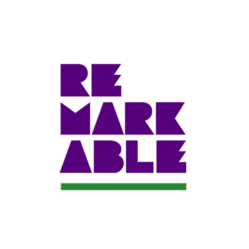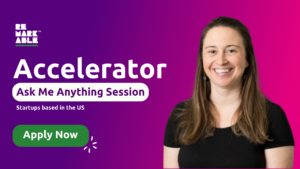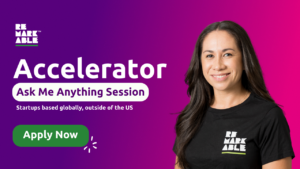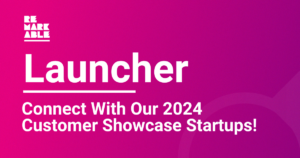Transcript
[00:00] Viv
We would like to acknowledge the traditional owners of the lands on which we record this podcast. The Gadigal people. This is their land, never ceded, always sacred and pay respects to the elders past, present, and emerging of this place. Coming up on Remarkable Insights.
[00:19] Vint
We worked together on the first paper that was published in 1974. We figured this out around 1973, in the fall. So this is the 50th anniversary of the basic concept of the internet.
[00:30] Viv
I have the absolute honor to introduce our next guest, Vint Cerf wildly known as the father of the internet, who joins us to talk about how he believes disability drives innovation. Vint, thank you so much for joining me for this episode of Remarkable Insights. If you are comfortable, could we start by you giving a visual description of yourself and the setting that you’re in.
[00:51] Vint
Yes. I liked that very much. I’m very attuned to the whole issue of accessibility. What you’re seeing is an 80 year, almost 80 year old guy with a white full beard and a bald head wearing a headset and wearing a grey pinstripe suit with a a blue shirt and a tie. The tie is a paisley black and white affair. In the background on the whiteboard is nothing secret but it is all about the interplanetary internet operation not necessarily a Google project, but a project that Google lets me work on, which I do with NASA and some of the other space agencies.
[01:38] Viv
I thought we’d start by looking back at when you first started to understand that perhaps you had hearing loss.
[01:44] Vint
I think that it was detected when I was in the fourth grade, which would mean I was about nine years old and I think that it was detected because it seemed as if I was inattentive from time to time. And so my hearing was tested and they decided maybe I should go to a special school in order to learn to lip read, or they didn’t think it was bad enough that I had to go to learn sign language or anything. So they’re gonna put me in a special class. And then there was a big debate and they said no, it would be better if I were just mainstream and I was be forced to concentrate and pay attention. So by the time I got to the seventh grade my hearing had diminished enough about 25 dB or so that I started to wear hearing aids.
[02:38] Viv
Is there any technology that’s available now that you wish you had at that age?
[02:43] Vint
No, not really. The closest we might come to something would be email, for example, but I’m not sure that it would have worked out very well in the settings of the 1950s and ’60s. It certainly did turn out to be spectacularly useful by the time 1971 rolls around when it gets invented during the Arpanet project. But I’m not sure that would’ve been useful. And the hearing aids worked very well. I’ve been able to function in a hearing world effectively, even with my hearing getting worse, the hearing aids get better. So here we are having this conversation. I have a headset on and I’m wearing my hearing aids underneath the headset and it seems to work.
[03:25] Viv
And would you say that hearing aids was your first entry point into the assistive technology world?
[03:32] Vint
Oh, absolutely, yes. At age 13, which would’ve been 1956 that’s the first exposure I had to assistive technologies.
[03:43] Viv
Wow. And when I’ve looked at the way that you were inspired by the prototypes of how the internet was shaped, I understand that your wife’s lived experience as well was also a big part of your personal passion for the idea of the internet.
[03:58] Vint
Yes and no. The whole idea behind the internet was what would happen if we got a whole bunch of computers talking to each other, regardless of who made them, was extremely interesting. These are not designed to talk to each other. How do you make it work? The other part, Bob Kahn and I pursued in our early period was what if you have a whole bunch of different networks? What if they’re radio and satellite and mobile and fixed installations, dedicated circuits, optical fiber, all this different communication capability, how do you make all that work together? That was the internet problem.
But during the Arpanet program, which started around 1968, or so and became visible to me in ’69 when I was at UCLA as a graduate student. The thing that got invented as an application very early on was electronic mail around 1971. Now, that instantly got my attention for two reasons. First of all, it meant that we could communicate without necessarily both being awake at the same time. Which meant that we could overcome some of the time zone problems associated with working with groups of people scattered around the planet. So that was one thing that was very attractive. But the second one is that reading is more precise than listening for someone with a hearing impairment. And so I was very attracted to that as a communication medium. And I’ve tended to take jobs with companies that are comfortable with using email as a primary communications tool. Google certainly falls into that category and so do the other companies I’ve worked for.
The thing which is perhaps most attractive and telling though about my relationship to the internet and my wife’s relationship to it, is that although she was not a big email user, she’s an artist, she wasn’t an engineer. Laptops and desktops didn’t come naturally to her but she did get on the internet once because someone told her that she should look into something called cochlear implants. Now this is 1996, so we’ve now been married for 30 years. The internet dot boom is underway. She gets a note from somebody in Israel aiming her at Johns Hopkins University. So she inquires ‘am I a candidate?’ She has 95 dB loss. She really can’t hear a jet plane going off in her left ear. Both ears are really bad and so she gets a note back saying, ‘why don’t you come up to Johns Hopkins? We’ll test to see whether or not your auditory nerve is still functional, even though the ciliar hairs that allow you to hear don’t work.’ So she goes up, she gets tested, she’s a candidate. Then she goes up and has the implant operation in 1996, she comes back, waits for a couple of weeks till everything heals. Then she goes back up to be activated. 20 minutes after they activate the speech processor, she picks up the phone and we have a conversation on the phone for the first time in 30 years of marriage. Not a deep conversation, but stunningly important. And by the time I get home I can’t get her off the phone. She’ll talk to anybody. She’s a 1960s teenager, so internet has become very central to her life and of course to mine for the last 50 years.
[07:23] Viv
Wow. And you are commonly referred or widely known as the ‘father of the internet’. How does that name feel for you?
[07:31] Vint
First it’s wrong because I’m not the only one. Bob Kahn and I did this project together. He started it by the way, I did not start it. He asked me to join him very early on in the process. We worked together on the first paper that was published in 1974. We figured this out around 1973, in the fall. So this is the 50th anniversary of the basic concept of the internet. And of course, we were smart about this as once we understood what it was we wanted to do, we went out and got a lot of help. And this is important for anyone who wants to do something big lesson number one, get help, especially from people who are smarter than you are. And of course, today it’s a global phenomenon.
We still have about a third of the world’s population to go to get online. So there’s lots of work still to be done, but the system has grown by something like six or seven orders of magnitude since its original implementation. And that’s quite astonishing. Normally you don’t find systems that will scale to that extent. And so I’m very happy and even proud of that. But as I say the successful implementation and the growth in new applications and everything else is a result of enormous amounts of investment by governments, by the private sector, and by literally hundreds of thousands, if not millions of people who are inventing new ways of using this technology.
[09:02] Viv
And was accessibility something you and Bob Kahn were thinking about when you were designing this prototype and the landscape of the internet?
[09:11] Vint
In all honesty, that was not top of mind. Although what one might want in flying an aircraft is to be able to control other parts of the aircraft, you might want voice capability to do that. Speech understanding turns out to be a very important possible alternative interactive medium. Once you can do that though, that means that you can, if you can understand speech, that means you can translate it from speech to text. If you can translate speech to text and you can show the text, which is what I’m doing right this moment my browser is actually taking the text that you’re speaking and putting it up on the top of my screen so I can see it. So there were implicit accessibility concepts that were hidden in or adjacent to the work that was going on, but I would say that my focus of attention was not so much on accessibility until I got into the commercial sector. And at that point, without any question at all accessibility has become a very highly important element for me. Not only in the context of work I do here at Google, but even in earlier context working on the MCI mail system and on some of the other defense applications, accessibility has become a high priority.
[10:32] Viv
When you’re thinking about this and maybe some of the barriers that might exist when it comes to accessibility with the internet, if you could go back to when you were first designing it is there anything that you would change knowing what you know now?
[10:46] Vint
Actually, I don’t think so. And part of the reason for that is that it has taken this long to get to the point where we have technologies that will allow us to do some of the things that we couldn’t figure out how to do back then. Speech understanding being example, speech to text, text to speech. Image recognition. We still don’t know how to do a good job of recognizing signing, for example, of either generating it or understanding it. There’s still a lot of work to be done there.
On top of which, designing an accessible user interface requires a depth of awareness and understanding of what makes a good user interface that we don’t all have. The engineers who build the user interfaces do not uniformly understand what makes an accessible interface. It requires a certain amount of intuition. It requires even some experience with what makes a useful and accessible interface. There are pockets of places where there’s deep focus on this. I know a number of people who’ve made careers out of this, but the general run of the mill programmer who’s writing an application doesn’t necessarily have either the intuition, technical maturity, and awareness to build these systems that really will be widely accessible across a variety of disabilities.
So we still have a long ways to go to train programmers to think about accessibility at the beginning. So if there’s anything to be done, it’s to remind people when they begin designing that they should be designing for everyone, not for a fictitious 20 year old with 2020 vision and a brain that’s running 900 miles an hour.
[12:33] Viv
Hey guys, it’s Viv again. If you’re enjoying this chat with Vint Cerf I reckon you should join in for the season finale of Season Two of Remarkable Insights where we’ll be featuring Part Two of our chat with Vint and also celebrating International Day of People with Disability.
[12:45] Vint
We should be accommodating people with disabilities because there’s no reason why they shouldn’t have equal equitable access to all of the Internet’s capabilities.
[12:54] Viv
Make sure you subscribe, follow us on Instagram and we’ll see you on the next Ep!






